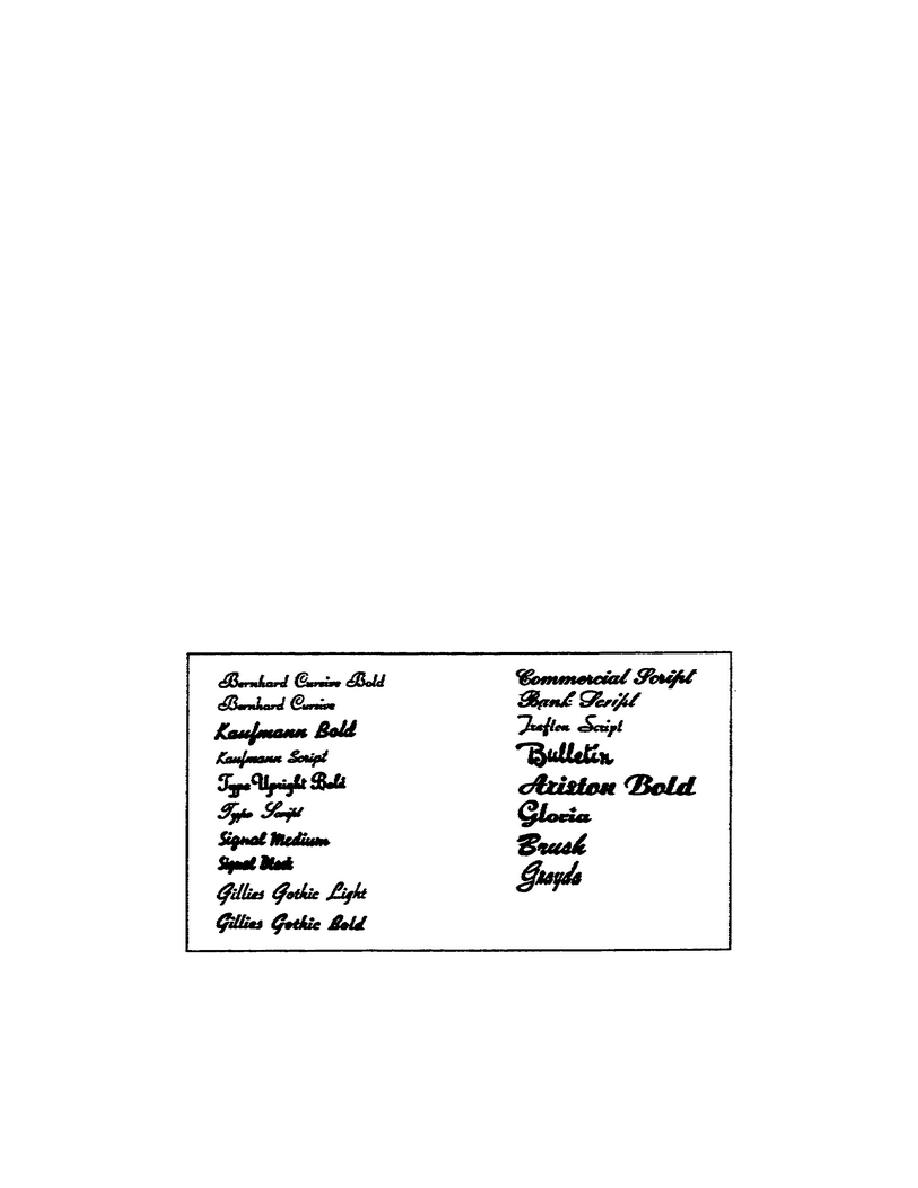
The sans-serif Gothic face shown in figure 1-4 is in common use today.
Compare the Roman typefaces shown in figure 1-3 with the Gothic typefaces
shown in figure 1-4.
Notice that the Roman face is easier to read than
the Gothic face, particularly in the smaller sizes.
You can use Gothic
style letters in a wide variety of applications today.
The following
paragraphs list a few of these applications.
(1) You generally use Copperplate Gothic for letterheads, envelopes,
cards, announcements and many types of official forms.
(2) Use
News
Gothic
in
the
body
of
newspapers
for
titles
and
headings.
(3) You primarily use Franklin Gothic, Alternate Gothic, and Poster
Gothic to letter display work.
They are popular for posters and as
headers on viewgraphs, charts, and tables.
d. Script and Cursive. Script and cursive (a style of printed letter
that imitates handwriting) type are classified together.
Script letters
have small connecting links called kerns that link the letters together
giving the lettering an appearance of handwriting. Cursive letters do not
have these kerns.
Refer to figure 1-5 and compare the Bernhard Cursive
style with the Ariston Bold style.
Notice that the Ariston Bold more
closely resembles handwriting than does the Bernhard Cursive.
This is
because the Ariston has kerns, while the Bernhard does not. Cursive type
is patterned after old-fashioned hand lettering, while script imitates the
old slanting handwriting.
Figure 1-5.
Script and cursive typefaces
1-5
SS0525



 Previous Page
Previous Page
